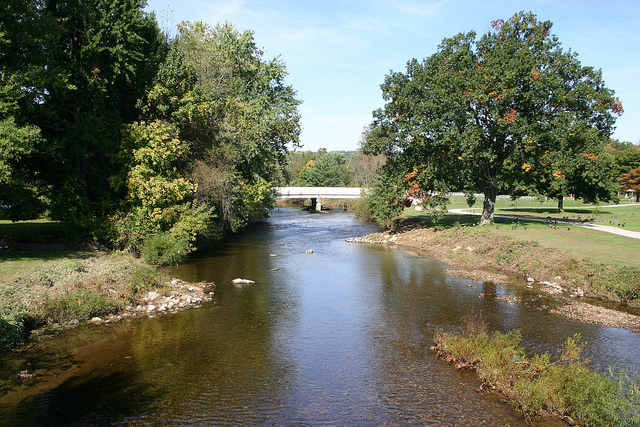5 Things You Didn’t Know about the Brandywine River

By Grace Knickerbocker
As reported last week, The Brandywine River is one of four rivers nominated in Pennsylvania Organization for Watersheds and Rivers’ (POWR) River of the Year contest.
In an area that is constantly developing and changing, the Brandywine River offers Chester County residents a constant and preserved source of history, nature, and outdoor adventure.
Since its beginnings the Brandywine has seen countless European settlers, The Battle of the Brandywine, the beginning of industrialization, and most recently, conservation efforts to preserve the river along with its surrounding lands.
The Brandywine River offers residents of the ever-developing Chester and Delaware Counties a chance to enjoy their community’s rich history while also providing a source of tourism as well as sporting and family activities.
Most residents of Chester County have visited at least one of the River’s various sights but few know just how valuable the Brandywine is to both past and present Chester County.
Here are five little-known facts about the Brandywine River that make the Brandywine River worthy of your vote:
Fact 1: The Brandywine is comprised of both East and West branches, each over twenty-five miles long, that meet to form the Lower Brandywine. The total length of the river stands at over 80 miles, flowing through Chester County, Delaware County, and into the State of Delaware, eventually discharging into the Christiana River and then the larger Delaware River.
Fact 2: The source of the name for the river has never been confirmed. In its earliest days the river was referred to as different variations of “Wauwaset”, the name given to it by its original inhabitants the Lenape Nation. Although there is no definite answer of how the river was deemed the “Brandywine” many believe it came from one of two sources: an old Dutch word for brandy “brandewijn” or from one of the first mill owners along the river; Andreas Brainwende.
Fact 3: Most know the Battle of the Brandywine, the largest battle in the American Revolution, took place along the river, however, the River also has more obscure holds in history. The paper used for the Declaration of Independence came from Benjamin Franklin’s print shop which was supplied by paper mills located on the Brandywine and the river served as a base point for surveying the Mason-Dixon Line.
Fact 4: The Brandywine provides Chester County with a multitude of sights for tourism offering attractions for all ages and interests such as wineries, an art museum, historical tours, The Brandywine Picnic Park, along with outdoor activities such as canoeing, tubing, and so much more.
Fact 5: There is a whole museum dedicated to it’s beauty. The Brandywine River Museum of Art boasts galleries with the work of members of the Wyeth family – capturing the beauty and history of the Brandywine.
The Brandywine River is currently up against the Allegheny, Perkiomen, and Loyalhanna rivers in POWR’s Pennsylvania River of the Year Contest.
Support The Brandywine and all it has to offer by voting for it here.
_______
Grace Knickerbocker, a Penn State sophomore, is a graduate of Avon Grove High School.
Connect With Your Community
Subscribe to stay informed!
"*" indicates required fields























![95000-1023_ACJ_BannerAd[1]](https://vista.today/wp-content/uploads/2023/03/95000-1023_ACJ_BannerAd1.jpg)
























